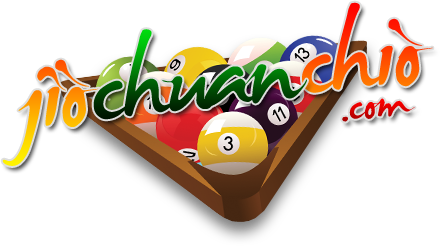History of Billiards
It is said that Billiards evolved from stick-and-ball lawn games or ground billiards games. Thus billiards can be considered as a cousin of trucco (also known as trucks or troco), croquet and golf.
"...all thriftles games that may be found... with dice, with cards, with billiards..." was the first ever recorded mention of the word "billiards". It can be found in Edmund Spenser's Mother Hubberd's Tale written in 1591.
"Billiard" may have come from the French word billart or billette, which means "stick", referring to a tool much like a golf club, which was the precursor of the modern cue stick. "Billiard" may have also been from the French bille, which means "ball".
An identifiable billiards variation was played outdoors during the 1340s, and was similar to croquet.
King Louis XI of France (1461-1483) had the first known indoor billiard table.
Louis XIV further refined and popularized the game, and it swiftly spread amongst the French nobility. While the game had long been played on the ground, this version appears to have died out in the 1600s, in favor of croquet, golf and bowling games, while table billiards had grown in popularity as an indoor activity.
Mary, Queen of Scots, claimed that her "table de billiard" had been taken away by what would eventually become her executioners (who covered her body with the table's cloth).
In 1588, the Duke of Norfolk, owned a "billyard bord coered with a greene cloth... three billyard sticks and 11 balls of yvery".
By 1670, the thin butt end of the mace began to be used not only for shots under the cushion (which itself was originally only there as a preventative method to stop balls from rolling off), but players increasingly preferred it for other shots as well.
The cue stick, as we know it today was developed during 1800.
Initially, the mace was used to push the balls, rather than strike them. The newly developed striking cue provided a new challenge. Cushions began to be stuffed with substances to allow the balls to rebound, in order to enhance the appeal of the game. After a transitional period where only the better players would use cues, the cue came to be the first choice of equipment.
The demand for tables and other equipment was initially met in Europe by John Thurston and other furniture makers of the era. The early balls were made from wood and clay, but the rich preferred to use ivory.
Early billiard games involved various pieces of additional equipment, including the "arch" (related to the croquet hoop), "port" (a different hoop) and "king" (a pin or skittle near the arch) in the 1770s, but other game variants, relying on the cushions (and eventually on pockets cut into them), were being formed that would go on to play fundamental roles in the development of modern billiards.
The early croquet-like games eventually led to the development of the carom or carambole billiards category - what most non-US and non-UK speakers mean by the word "billiards".
These games, which once completely dominated the cue sports world but have declined markedly in many areas over the last few generations, are games played with three or sometimes four balls, on a table without holes (and without obstructions or targets in most cases), in which the goal is generally to strike one object ball with a cue ball, then have the cue ball rebound off of one or more of the cushions and strike a second object ball.
Billiards popularity rapidly grew. By 1727, it was being played in almost every Paris cafe. Meanwhile, in England, the game was getting more popular with upper class.
Over time, a type of obstacle returned, originally as a hazard and later as a target, in the form of pockets, or holes partly cut into the table bed and partly into the cushions, leading to the rise of pocket billiards, especially "pool" games, popular around the world in forms such as eight-ball, nine-ball, straight pool and one-pocket.
The terms "pool" and "pocket billiards" are now virtually interchangeable, especially in the US. English billiards (what UK speakers almost invariably mean by the word "billiards") is a hybrid carom/pocket game, and as such is likely fairly close to the ancestral original pocket billiards outgrowth from 18th to early 19th century carom games.
